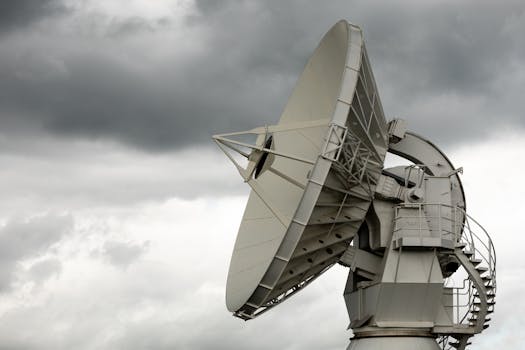GEO Satellites: Unlocking the Power of Geostationary Orbit
GEO satellites, or geostationary satellites, are a type of satellite that orbits the Earth at an altitude of approximately 36,000 kilometers, allowing them to remain stationary relative to a fixed point on the equator. This unique characteristic makes GEO satellites an essential part of modern satellite technology, providing a wide range of services including telecommunications, weather forecasting, and navigation. In this article, we will delve into the world of GEO satellites, exploring their history, applications, and future developments.
History of GEO Satellites
The concept of GEO satellites was first proposed by scientist Arthur C. Clarke in 1945, who envisioned a network of satellites in geostationary orbit that could provide global telecommunications coverage. The first GEO satellite, Syncom 2, was launched in 1963 by NASA, followed by the first commercial GEO satellite, Intelsat 1, in 1965. Since then, the use of GEO satellites has expanded rapidly, with thousands of satellites launched into geostationary orbit to date.
Applications of GEO Satellites
GEO satellites have a wide range of applications, including telecommunications, weather forecasting, navigation, and Earth observation. Telecommunications satellites, such as Intelsat and SES, provide broadband internet, television, and voice services to millions of people around the world. Weather forecasting satellites, such as GOES and Meteosat, provide critical data for predicting weather patterns and storms. Navigation satellites, such as GPS and GLONASS, provide location information and timing signals for a wide range of applications, including aviation, maritime, and land transportation. Earth observation satellites, such as Landsat and SPOT, provide high-resolution images of the Earth’s surface, used for applications such as agriculture, forestry, and disaster response.
Future Developments in GEO Satellites
Despite the many advances in GEO satellite technology, there are still significant challenges to be addressed, including the increasing demand for bandwidth, the need for more efficient propulsion systems, and the growing problem of space debris. To address these challenges, researchers and manufacturers are developing new technologies, such as high-throughput satellites, electric propulsion systems, and advanced materials. Additionally, there is a growing trend towards the use of smaller, more agile satellites, such as smallsats and cubesats, which can provide more flexible and cost-effective solutions for a wide range of applications.
Conclusion
In conclusion, GEO satellites are a crucial part of modern satellite technology, providing a wide range of services that are essential for modern life. From telecommunications and weather forecasting to navigation and Earth observation, GEO satellites play a vital role in connecting the world and providing critical data for a wide range of applications. As the demand for satellite services continues to grow, it is likely that we will see significant advances in GEO satellite technology, including the development of new propulsion systems, advanced materials, and more efficient satellite designs.
